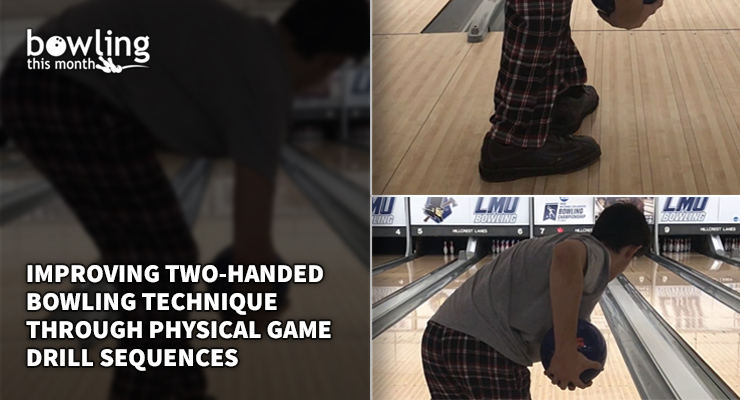Article Contents
- 1. Key components of an efficient two-handed physical game
- 1.1. The setup
- 1.2. Maintaining the setup angles
- 1.3. Walk → ball → align
- 1.4. Elbow alignment at the top of the swing
- 1.5. Rotate the ball side shoulder under the front shoulder
- 1.6. Long elbow extension
- 2. Physical game drill sequencing
- 2.1. Foul line drill
- 2.2. Perpendicular foot drill
- 2.3. Two-handed one-step drill
- 2.4. Top of the swing drill
- 2.5. Skip drill
- 3. Conclusion
Note: This article is only available to Bowling This Month subscribers.
Five years have passed since I wrote Training Two-Handed Players, which was featured in the September 2013 issue of Bowling This Month. Over my career, I have worked with more than 50 two-handers and, as a college bowling coach, I currently work with several two-handers on a daily basis. As a coach, I have made a concerted effort to not only understand the biomechanics of the two-handed game, but to also develop unique training techniques based on these mechanics to help two-handers improve their games efficiently and to help coaches train two-handers efficiently.
Over the past few years, I have had several requests to update my insights into two-handed bowling. This article introduces two new two-handed drills, revisits my original two-handed drills, and discusses key components of an efficient two-handed physical game.
Key components of an efficient two-handed physical game
The ultimate goal of an efficient physical game is to reduce movement from the setup through the approach while maintaining maximum energy transfer from the bowler to the bowling ball. Here are some critical pieces of the two-handed physical game.
The setup
To better understand the setup recommendations, it is best to envision the body position at the top of the swing. This will help explain why I encourage the setup I do. Specifically, the key component at the top of the swing is shoulder alignment (via elbow alignment).
When working with two-handers, the goal of the setup is to preset the body position to ensure the movement to the top of the swing is fluid and requires minimal change from the ...
Already a premium member? Click here to log in.


 (Only
(Only 